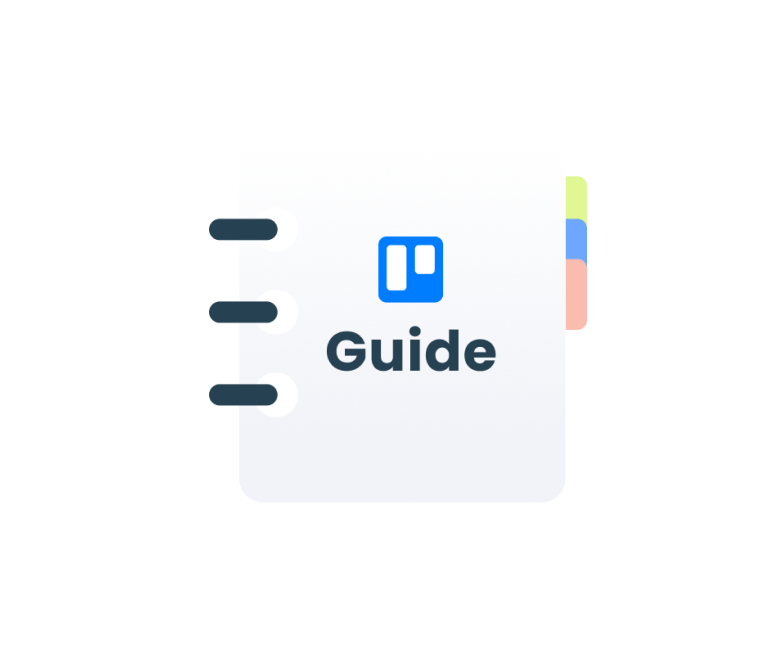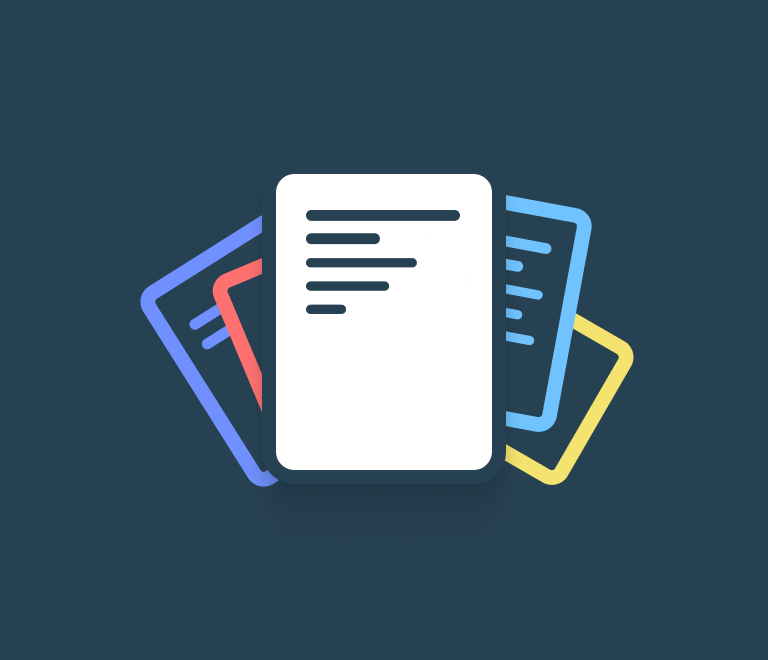Project Manager’s Quickstarter
Resource Planning for Effective Project Management in Trello
One of the most important and yet challenging questions project managers ask themselves when taking on a new project is: “How can we deliver it on time and on a budget?”. And even a rookie project manager knows: managing projects means managing resources.
Why do you need resource planning?
No matter what kind of company you work in: a marketing agency, a software development company, or a construction firm, I bet you agree that the main and most sophisticated resource to manage is people. Since it means your success will always depend on the others and only by effectively managing them you will get work done at the right time and under budget.
The cornerstones of resource planning in project management are identifying the number of resources needed to complete a project and the ability to assign the right people to the right tasks. And that is when you and your resource planning software become besties.
Its biggest benefit is that you as a manager always have a clear overview of who is doing what and when, so you can balance workloads and take all projects under control. The resource planning goes along with transparency and seamless collaboration. Everybody knows what they are in charge of and how much time they have to accomplish their tasks. So, it helps you spend less time on micromanagement and concentrate on bigger things to achieve goals much faster.
How to use Trello resource planning for multiple projects?
If you’re already on your way to creating a resource plan, let’s dive in a little deeper. We’ve come up with 10 steps to get started:
1. Estimate task duration
Knowing the task length is the first step in figuring out the overall duration of the project to agree on it with your bosses, customers, or other stakeholders. Even though estimates aren’t necessarily answers, but rather guidelines, they can help a lot with forecasting and Trello capacity planning.
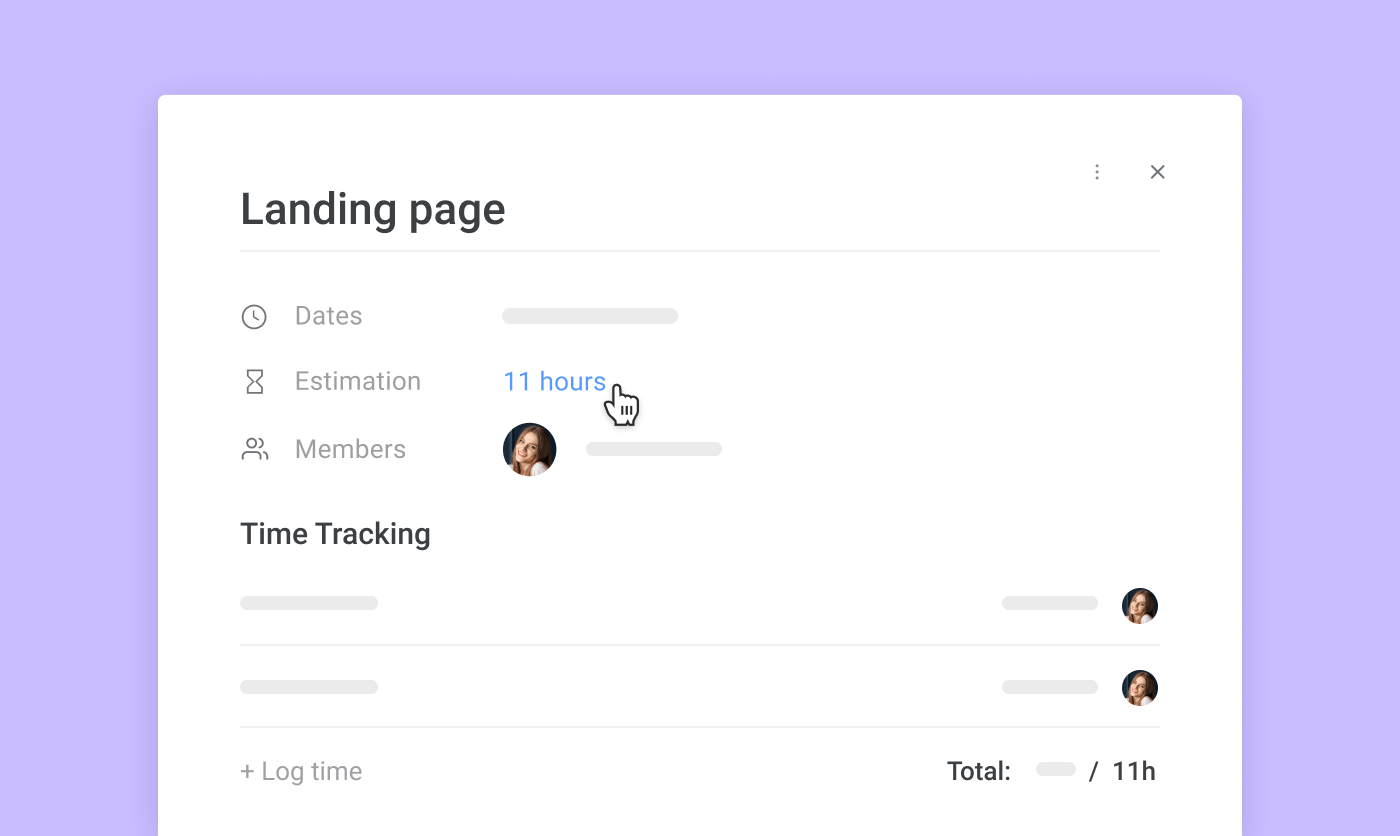
2. Build a project plan
The very first thing you should start with is to break your project down into tasks. This can be as granular as you wish. Once you’ve jotted down all your tasks, it’s time to prioritize them.
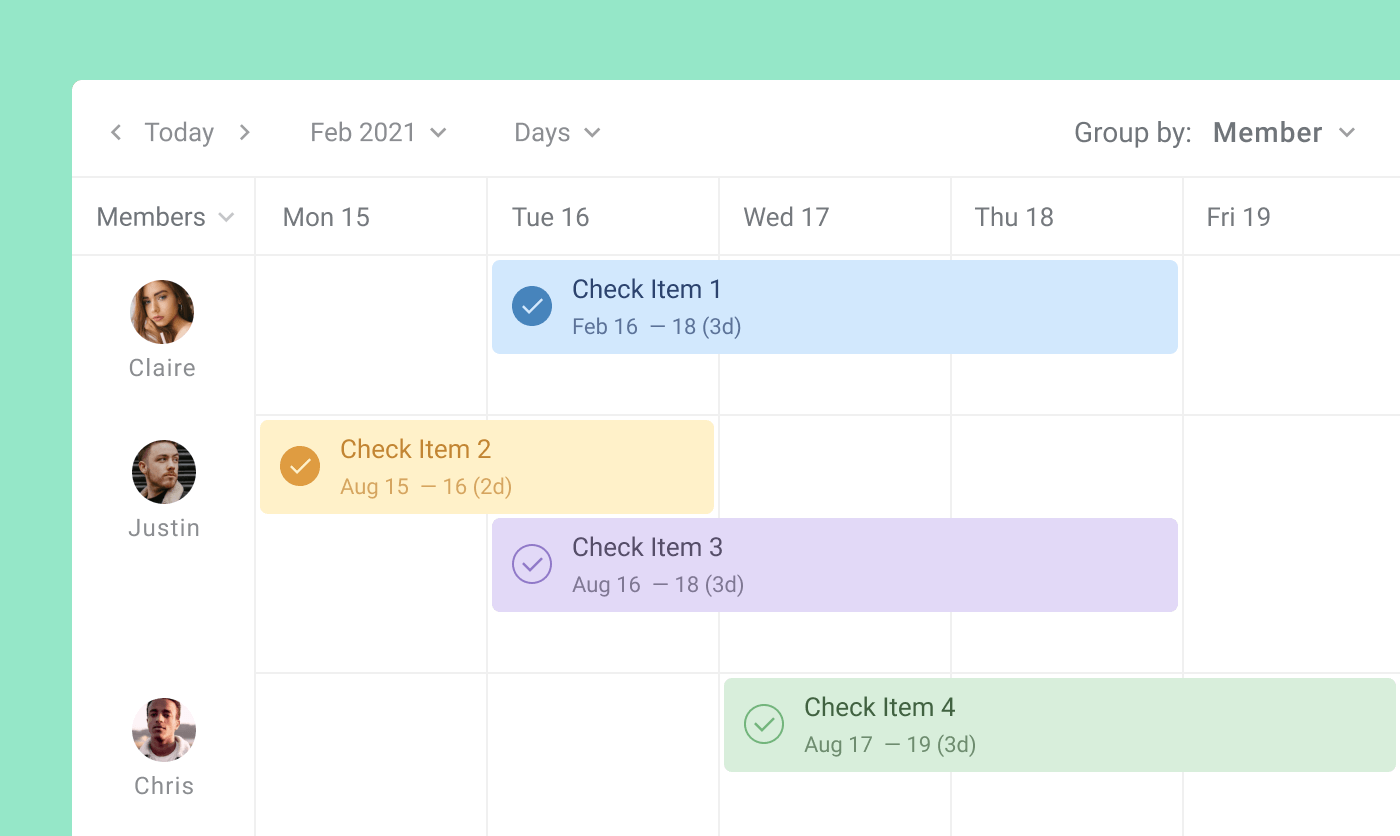
3. Distribute work efficiently
Once you've mapped out all tasks to be done, you can allocate them. Visualize your whole team on a single timeline and assign tasks they need to do. This mighty view will help you see in one glance who is over their capacity and set upcoming tasks accordingly.
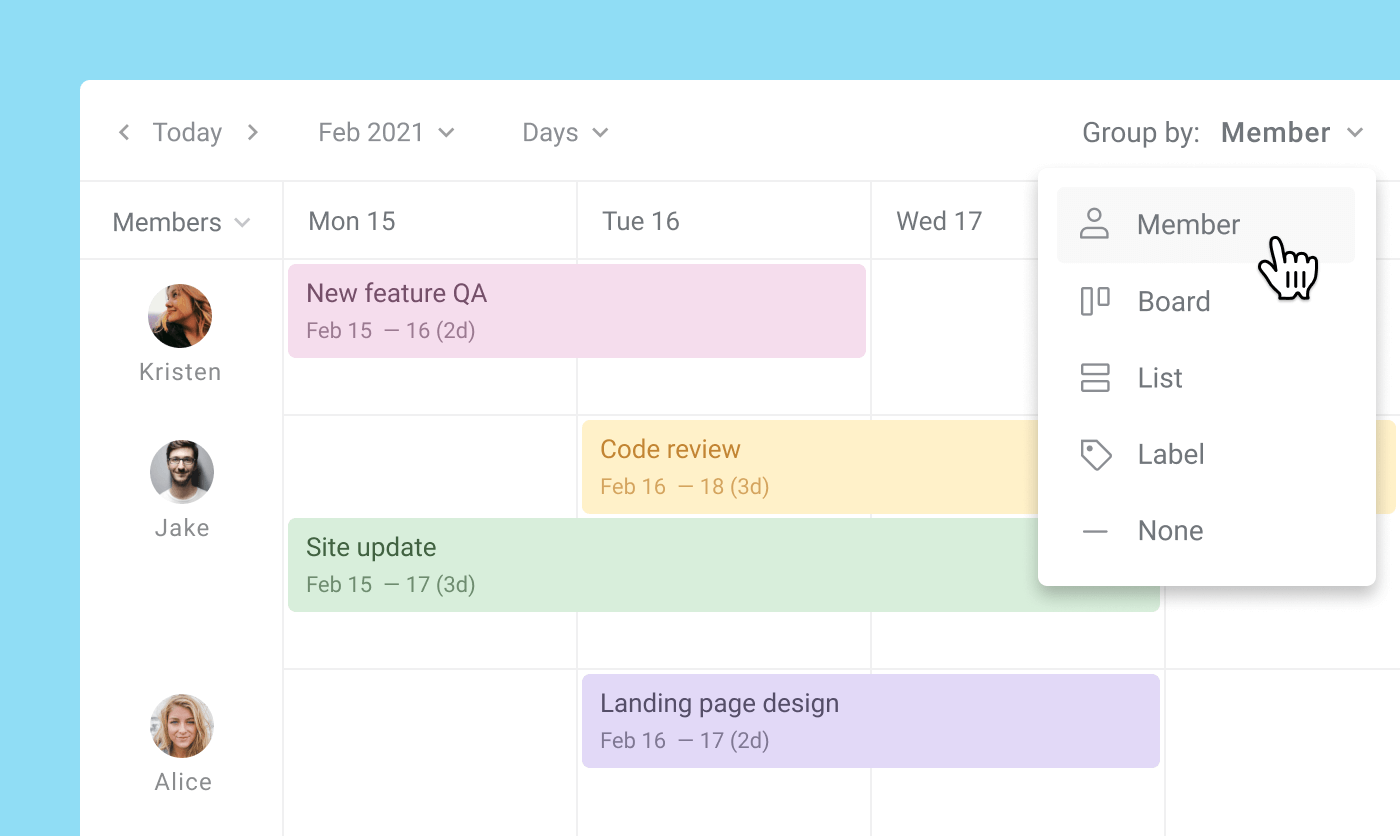
4. Set up deadlines
Another important step in managing your resources is to define due dates. This, together with the priority status, will help your team manage their time much better and hit deadlines on time.

5. Adjust to changes
When something goes wrong, it’s essential to stay flexible, especially since project variables change frequently. Worries aside, as you can always reassign and reschedule tasks to make sure everything stays on target and all tasks will be completed within the time frame.
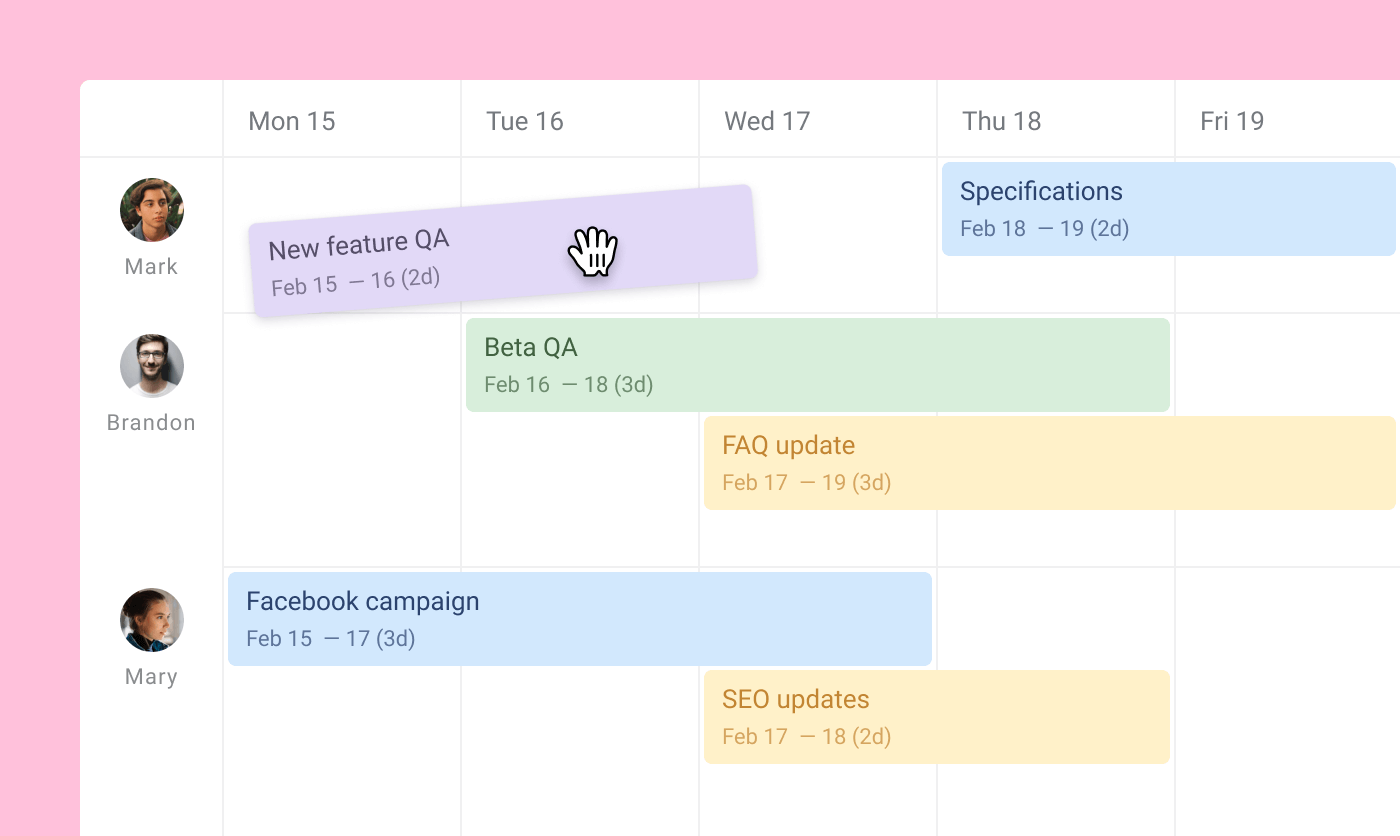
6. Manage multiple projects
Combine information from several boards into a single view. This is super helpful when your team is assigned to tasks on multiple boards since you can see their capacity from all projects together and won’t miss anything.
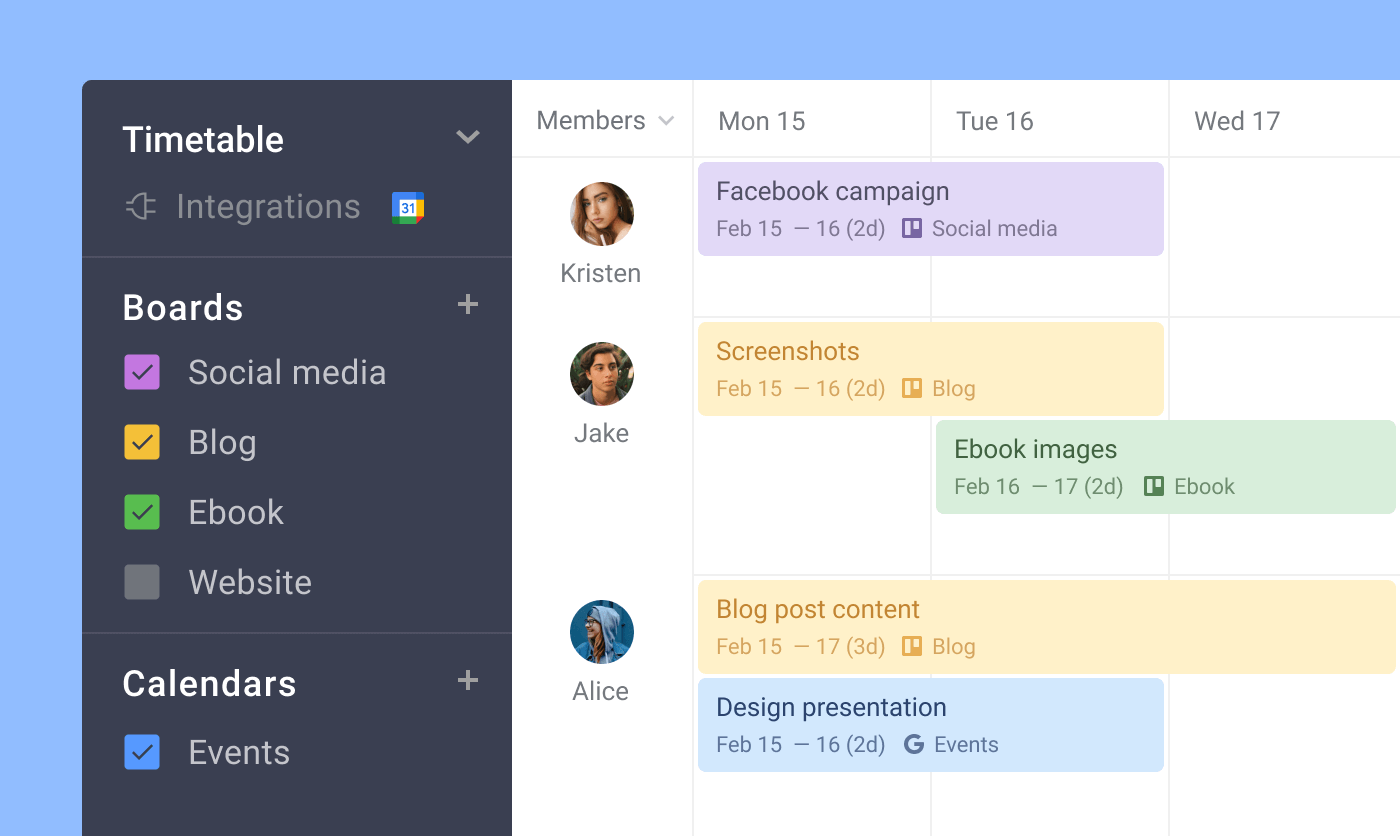
7. Keep budget under control
Track how much time your team is actually spending by recording their efforts in the timesheet. So, you will get all time entries right in the task-related card. When you see a clear difference between your estimated and actual time, you can make sure that you’re not exceeding your budget or charging your clients accordingly.
![]()
8. Build reports
Gain powerful insights into how your team is performing. Export all you need into a CSV file and analyze it with Excel or any other tool you prefer. Transform data into meaningful charts and progress bars which make it easy to identify the weak points and areas for improvement.
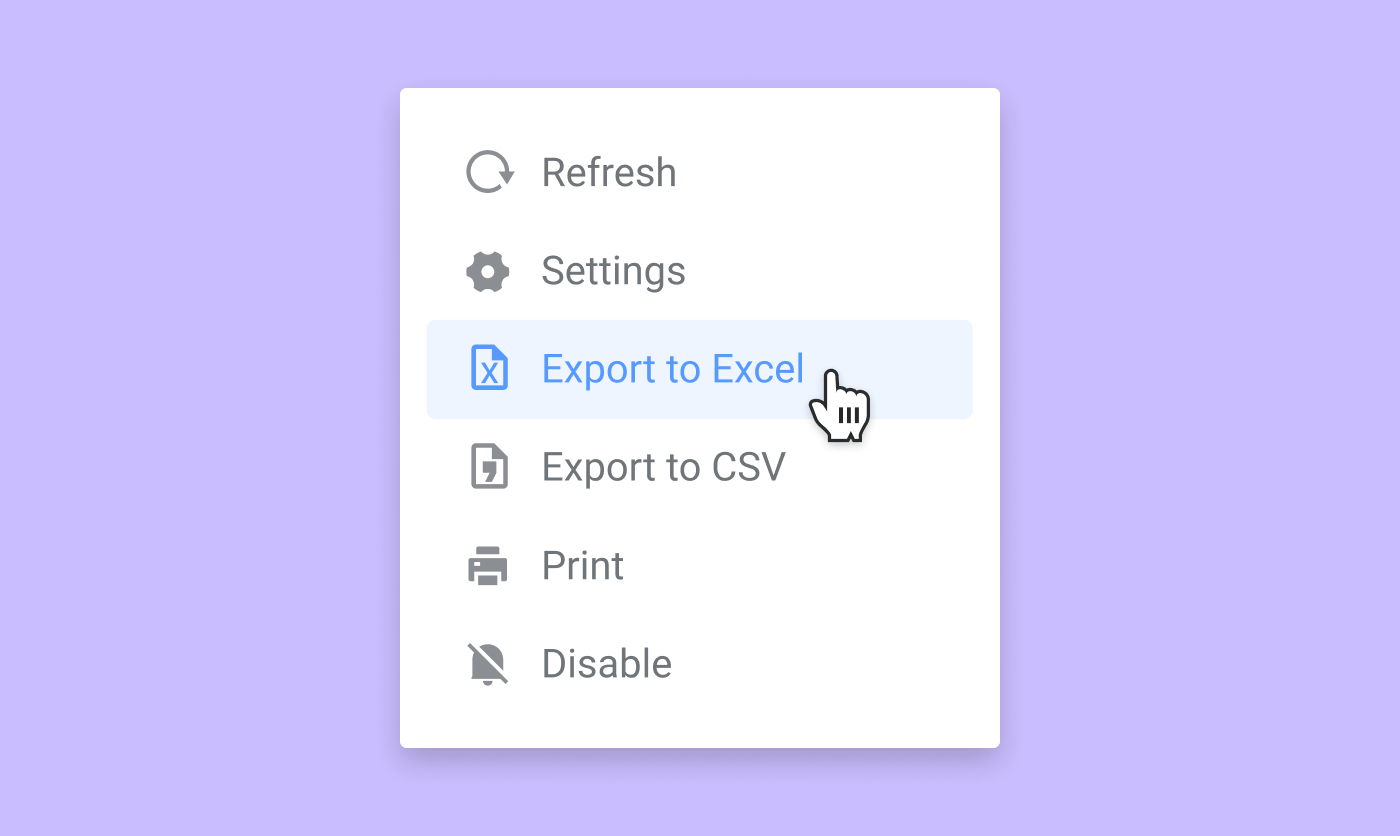
9. Collaborate with team
With well-built resource planning, you kill two birds with one stone. You not only effectively meet all project demands and coordinate tasks with resources but you also create a solid base for team collaboration. When everyone knows roles and responsibilities in the project, your team members can easily communicate on their own. It significantly speeds up the workflow. And that’s the reason why we’re constantly enhancing Planyway with such superpowers as team chat, attachment and link exchange, and much more.
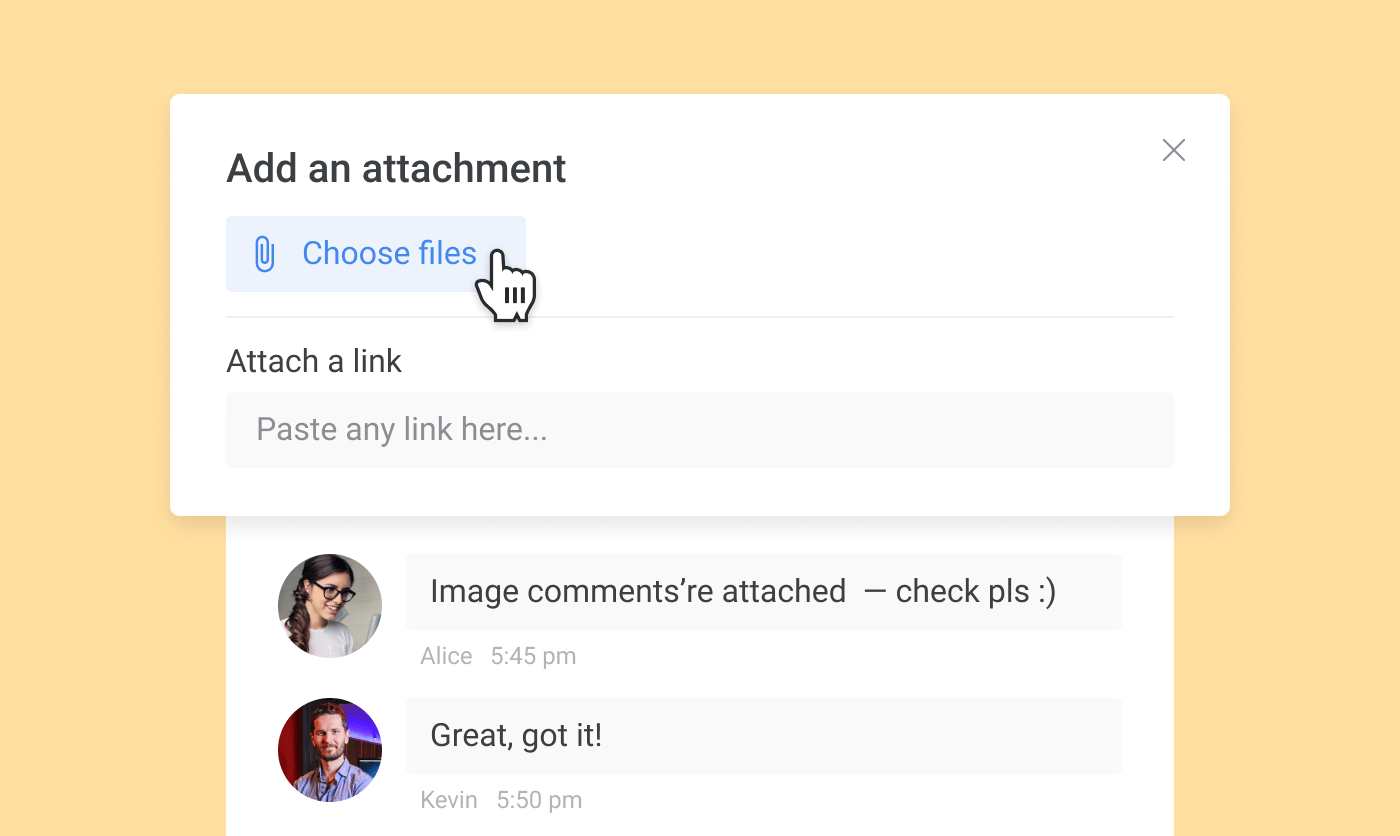
Ready to build a resource management plan?
When having all hands on deck it’s not easy to find strength and time to take a step back from micro-managing each and every asset and do the rethinking in favor of resource planning tools. This switch doesn’t mean you have to learn something complicated. In fact, it will take you a couple of minutes for onboarding and some time just for looking around to see what is where. In return, it can save you up to five hours a week, get rid of thousands of spreadsheets, and start delivering all your projects on time and on budget. What could be better than that?



